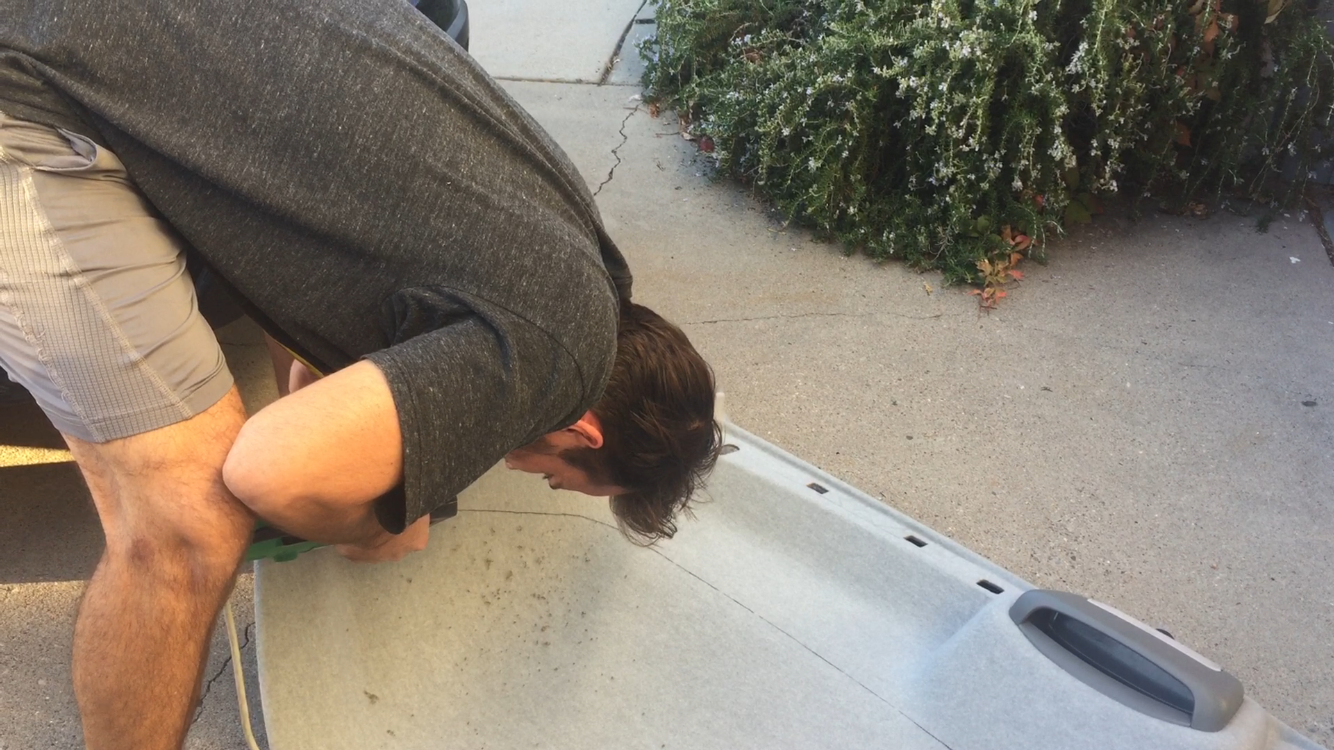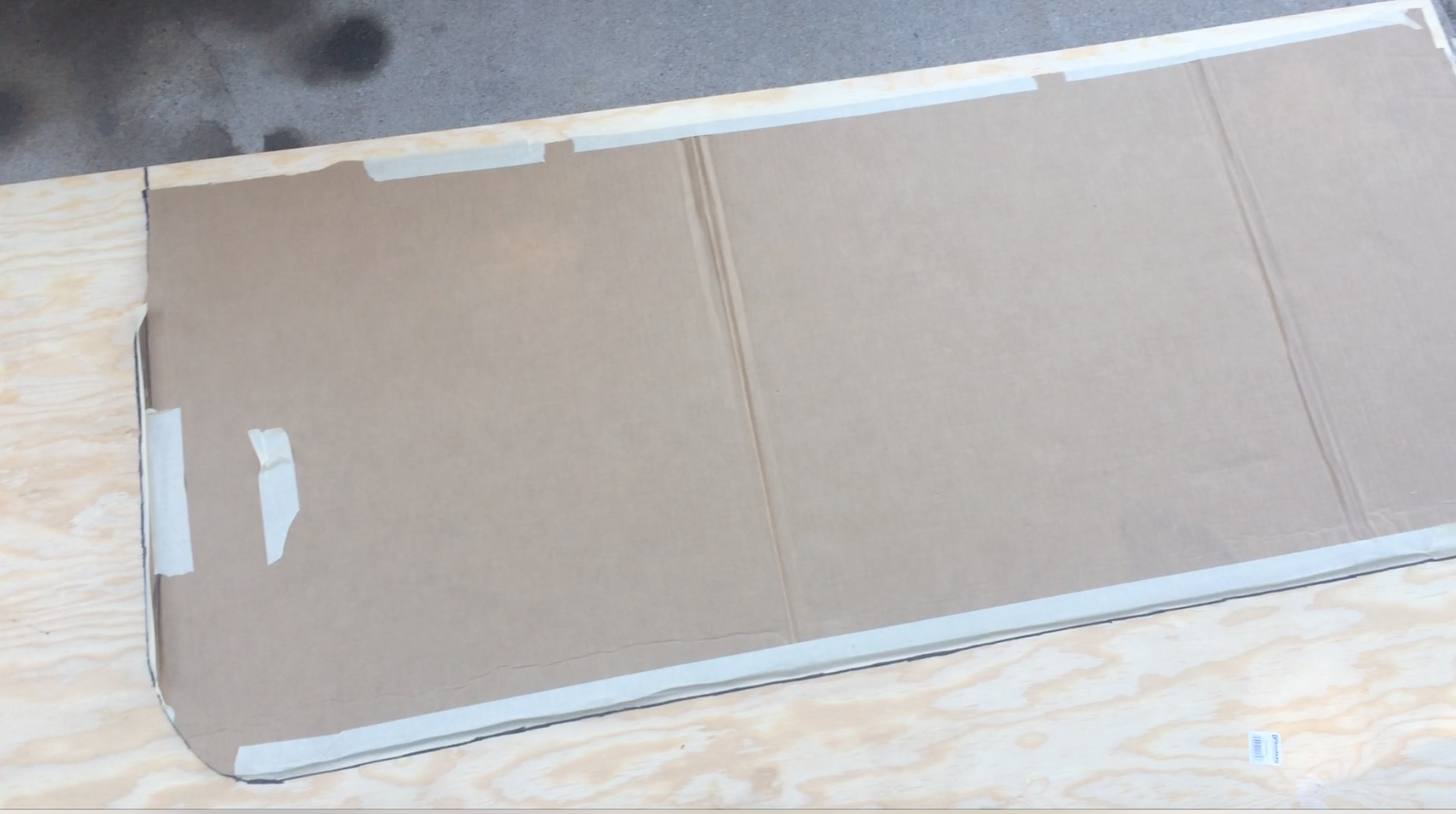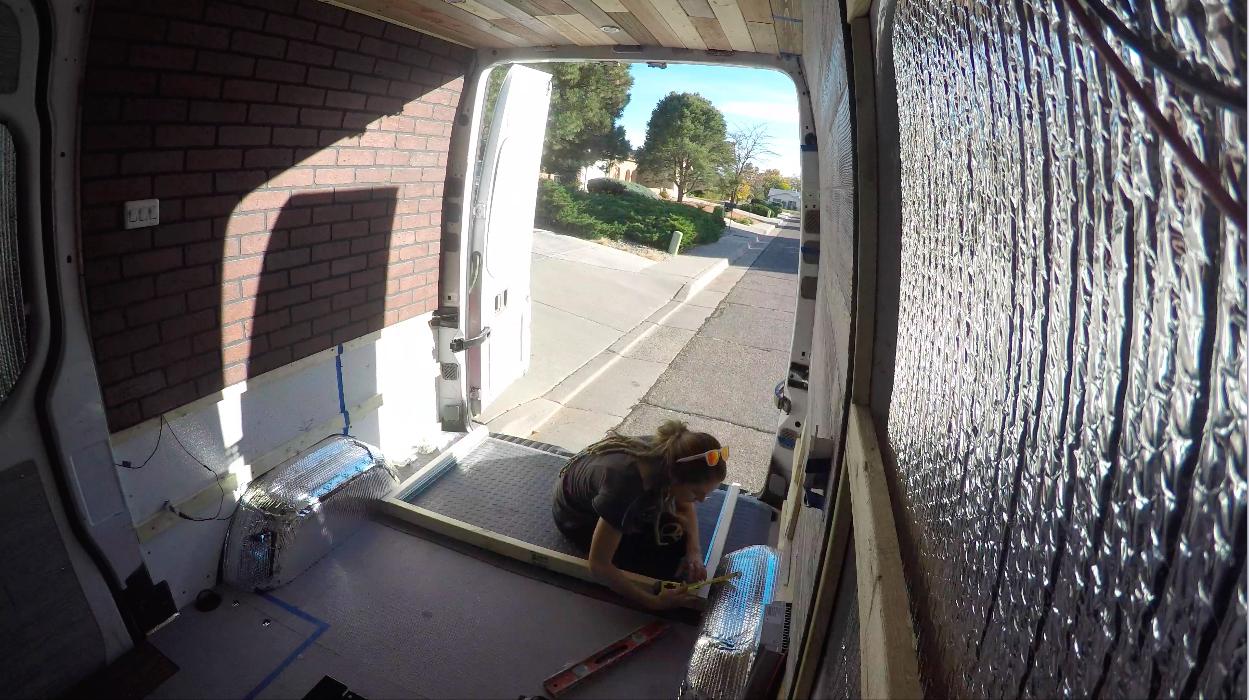We call this: The Attic.
YouTube Inspiration:
We had narrowed down the overcab remodel to two ideas that we liked from our YouTube brainstorming adventure.
The first Youtube idea was simple, cheap and we could move on from this project and have extra storage. We almost went for it. It involved a wire shelf like this one cut to size, with L-Brackets secured where the stock coat hanger screws went, some L-brackets where the visor/“oh shit handle” bolt in, on both sides. The wire shelf is easily removable, secured to the L-brackets with velcro, but it didn’t maximize that space. It utilized it, but didn’t maximize it.
Then, Kevin showed me another video on the other end of the spectrum, work and design wise. It would really maximize that space above any idea I have thought of or seen on the interwebs. We knew that it was a serious remodel and if we didn’t maximize this space (in this way), now, early… this stupid last minute idea we just found would haunt us forever. So, we took on this three day project.
Here’s our version of the Attic re-model:
First, we taped a line across from the left side around to the right side, trying to stay as straight as possible above the visor upper storage (we liked that and wanted to keep it). When we were happy with that line, we sharpie’d a line on there.
Then, we took off grey plastic sheathing that was holding the overhead piece up. First, you pull off the coat hangers to expose the screw underneath. Unscrew those. Then, unscrew the plastic visor piece and keep unscrewing till you get the whole piece off. Once you have that off, the over head piece should just lift out of place. Then, jigsaw that Sharpie line top off the cab. We also cut out a little box area, above the light, to utilize that dead space there, as well. The cabover wasn’t too difficult to get thru with the jigsaw. It was scary and a commitment once we sharpie’d it.
Stencils for the paneling
We probably should have used our Reflextix as a stencil for this, but we #90 sprayed it to the Thinsulate and it wasn’t coming off. So, we got to making more stencils of the front area. I cut a paper grocery bag flat and pressed it up against the corner to crease the bag so we could get an idea of the corner cut for the stencil. We transferred that to cardboard and shoved that into place, cut out where it wasn’t lining up, trim here, trim there. Sometimes, we would tape little pieces to the stencil to replace or create weird curvatures and then transfer that to another piece of cardboard.
Because we didn’t want to have a rivet look and had no idea where we were going to anchor in some screws, without taping into some metal and going thru to the outside—yikes. So, Kevin used a little skate ramp knowledge to the build. He suggested that we cut and experiment with the free plywood that we found in the scrap bin at Lowe's (Yes, this is a real thing! And it is awesome!)
Our plan was to bend them to contour to the van. We puddled some water on the boards and spread it out over the area we were wanting to bend. Then, we straddled them across our work horses. We placed our AGM batteries and weights on the center to make them bow over night. We left them for about 30 hours.
Stoked on the new curves, we chucked them in the van, even tho they weren’t cut to size. Just to make sure the curve fit the van. It was perfect so, we immediately threw our stencil on them and jigsaw’d it out. When we were checking the curve, we noticed there is place where you can wedge the plywood in between the frame above the windshield. It held the board in place almost without screws. So, we accounted for that when we marked our cut line. There were three panels we cut to fit. On the seams, we ran a rope molding. Once the panelling was finished, we started on the shelf.
Building the Shelf
We got a 6’ x 3/4” Square Steel and cut it to fit and act as a the support for the shelf. We cut it to size with a hacksaw. Then, we banana peeled each side to create eight places to mount the steel on the frame. That was cut with a hacksaw as well. Not the cleanest, but it feels sturdy with 8 self tappers holding that guy in.
We made heaps of stencils to cut the plywood that would become the shelf above the cabin. Because it is such a weird space, where the front area, right above the windshield, of the shelf is bigger than the back area. So one piece of wood wouldn’t work. We watched the guy say it in the video and we tried it anyway. So we had to cut the shelf into two pieces so it would fit snuggly.
To support the cut down the center of the shelf, we got a 3’x3/4” Flat Aluminum steel and bent it to be able to add support down the middle but also to cover up that seam in the plywood.
We were going to cover the plywood in some of this like our Camparu (Subaru Build out) but, last minute, I thought I’d rather re-use some cool old rug or free fabric, if I could find something that fit. I used a blanket we keep in the car for picnics. And luckily our aluminum flat iron happened to line up with the grey line in the fabric. Yay! We screwed the plywood into the Aluminum and cut out some of the old rubber flooring to cover the plywood for shelf protection and easy cleaning.
Next, we hung out in the plumbing area of Lowe’s for a good 45 minutes messing with all the fittings until we had some sort of railing made out of copper to finish the project off.
If we had to do this project again, we totally would. It was struggle street for a bit. But, there is so much more room for hiking back packs, tents, whatever up there!
























